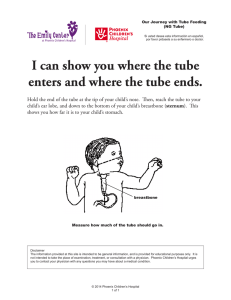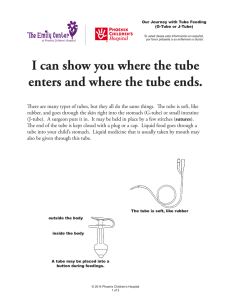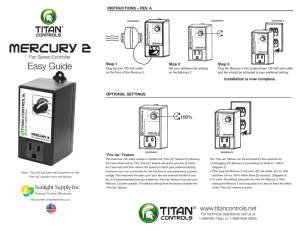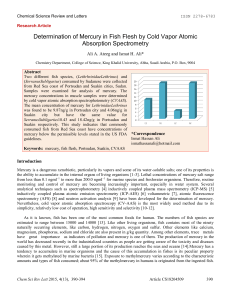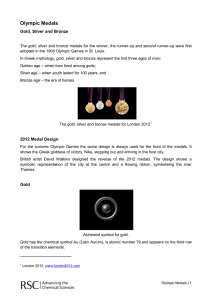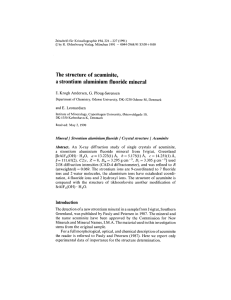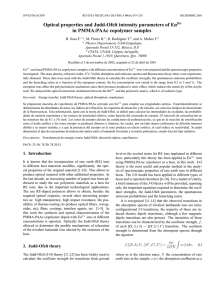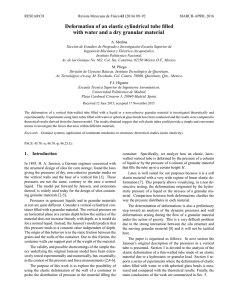Separation of lead
Anuncio
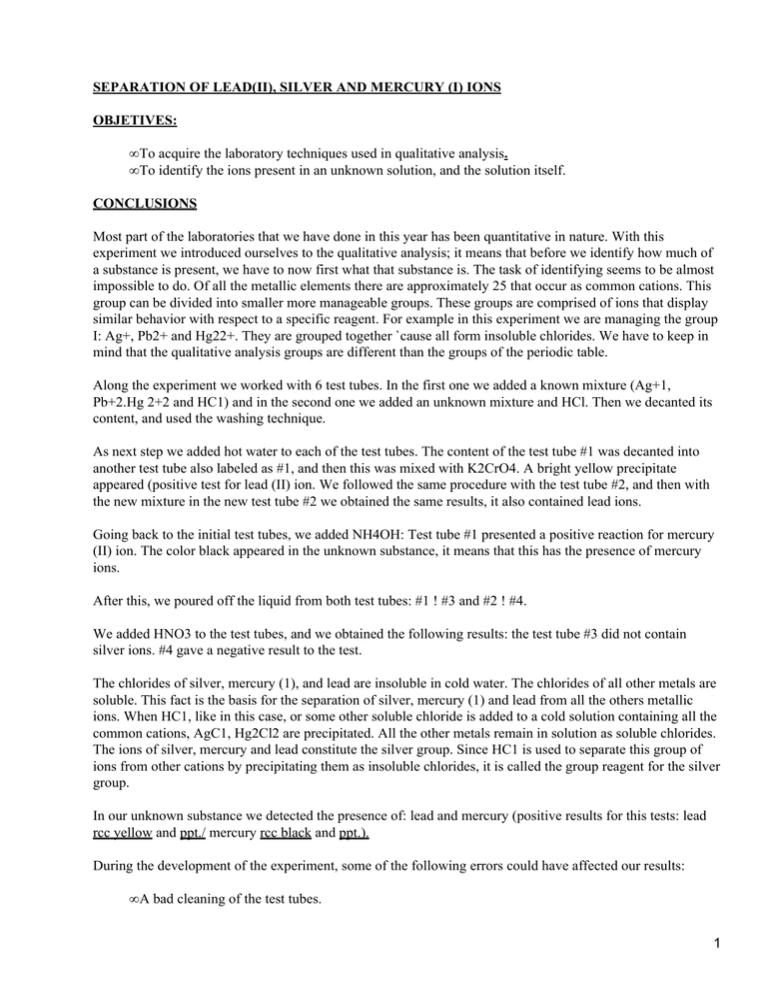
SEPARATION OF LEAD(II), SILVER AND MERCURY (I) IONS OBJETIVES: • To acquire the laboratory techniques used in qualitative analysis. • To identify the ions present in an unknown solution, and the solution itself. CONCLUSIONS Most part of the laboratories that we have done in this year has been quantitative in nature. With this experiment we introduced ourselves to the qualitative analysis; it means that before we identify how much of a substance is present, we have to now first what that substance is. The task of identifying seems to be almost impossible to do. Of all the metallic elements there are approximately 25 that occur as common cations. This group can be divided into smaller more manageable groups. These groups are comprised of ions that display similar behavior with respect to a specific reagent. For example in this experiment we are managing the group I: Ag+, Pb2+ and Hg22+. They are grouped together `cause all form insoluble chlorides. We have to keep in mind that the qualitative analysis groups are different than the groups of the periodic table. Along the experiment we worked with 6 test tubes. In the first one we added a known mixture (Ag+1, Pb+2.Hg 2+2 and HC1) and in the second one we added an unknown mixture and HCl. Then we decanted its content, and used the washing technique. As next step we added hot water to each of the test tubes. The content of the test tube #1 was decanted into another test tube also labeled as #1, and then this was mixed with K2CrO4. A bright yellow precipitate appeared (positive test for lead (II) ion. We followed the same procedure with the test tube #2, and then with the new mixture in the new test tube #2 we obtained the same results, it also contained lead ions. Going back to the initial test tubes, we added NH4OH: Test tube #1 presented a positive reaction for mercury (II) ion. The color black appeared in the unknown substance, it means that this has the presence of mercury ions. After this, we poured off the liquid from both test tubes: #1 ! #3 and #2 ! #4. We added HNO3 to the test tubes, and we obtained the following results: the test tube #3 did not contain silver ions. #4 gave a negative result to the test. The chlorides of silver, mercury (1), and lead are insoluble in cold water. The chlorides of all other metals are soluble. This fact is the basis for the separation of silver, mercury (1) and lead from all the others metallic ions. When HC1, like in this case, or some other soluble chloride is added to a cold solution containing all the common cations, AgC1, Hg2Cl2 are precipitated. All the other metals remain in solution as soluble chlorides. The ions of silver, mercury and lead constitute the silver group. Since HC1 is used to separate this group of ions from other cations by precipitating them as insoluble chlorides, it is called the group reagent for the silver group. In our unknown substance we detected the presence of: lead and mercury (positive results for this tests: lead rcc yellow and ppt./ mercury rcc black and ppt.). During the development of the experiment, some of the following errors could have affected our results: • A bad cleaning of the test tubes. 1 • Bad measurement of the substances. • Jump over some step in the procedure sheet. • Bad management of the substances. 2

